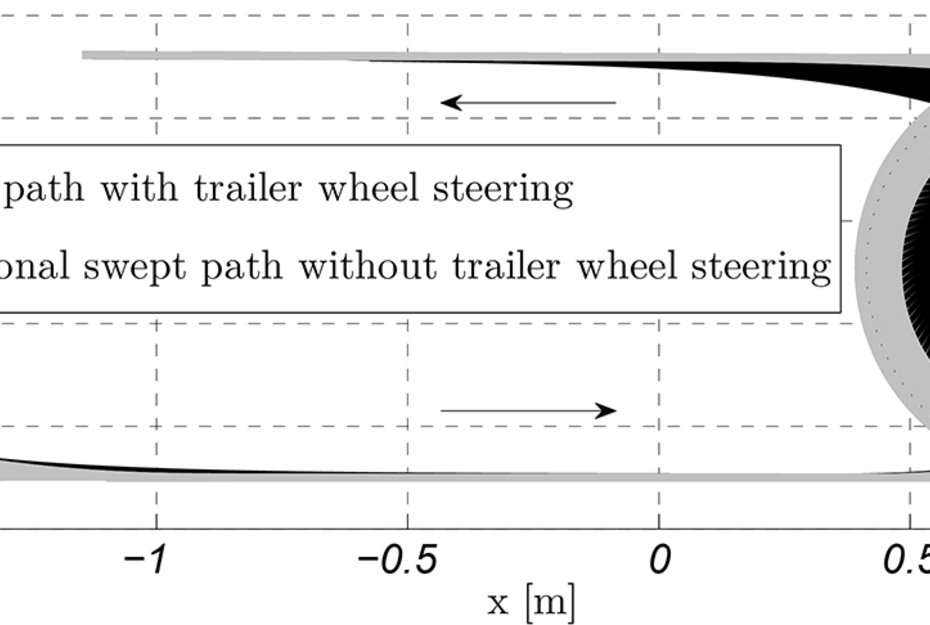
During tight cornering, a tractor-trailer combination requires a lot of space and, therefore, such a manoeuvre can be problematic if the available space is limited. This situation occurs, for example, in urban areas or on narrow roads in rural areas. An important manoeuvrability/safety aspect during tight cornering is the swept path width, i.e. the width of the space required by the vehicle during the manoeuvre.
The goal of this project is to reduce the swept path width of a tractor-trailer combination by designing a trailer axle steering strategy such that the rear of the trailer follows the path driven by the front axle. Current trailer steering systems are already able to reduce the swept path width, however, there is potential for improvement by using more advanced trailer steering strategies.
The design of the control strategy includes (kinematic) modelling, deriving reference (tracking) signals and (nonlinear) controller design. Furthermore, a tractor-trailer robot is used to experimentally validate the trailer steering strategy. Since the experimental results prove that the rear of the trailer accurately follows the path driven by the front wheel, the swept path width is significantly reduced compared to the case without trailer steering.
Downloads
Contact
-
Ritzen, P.J.

